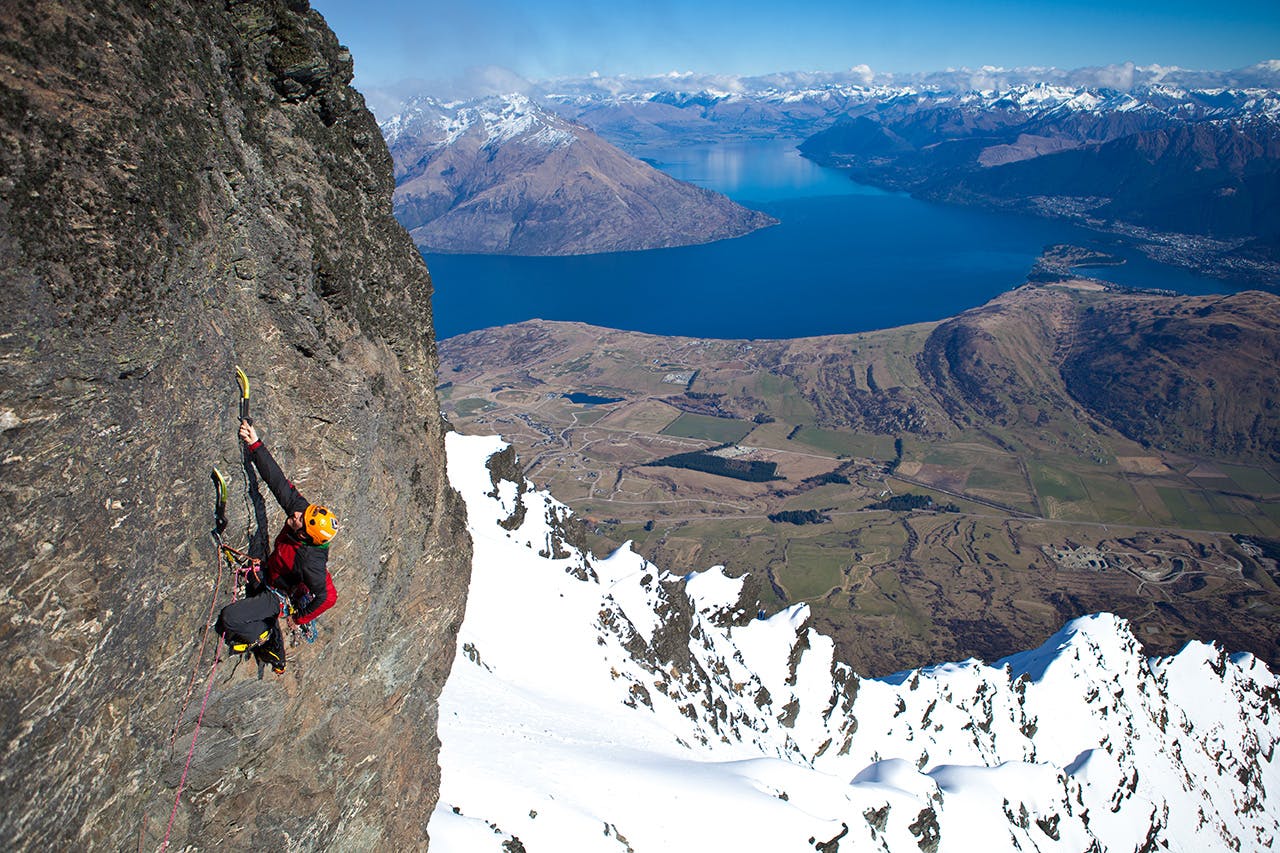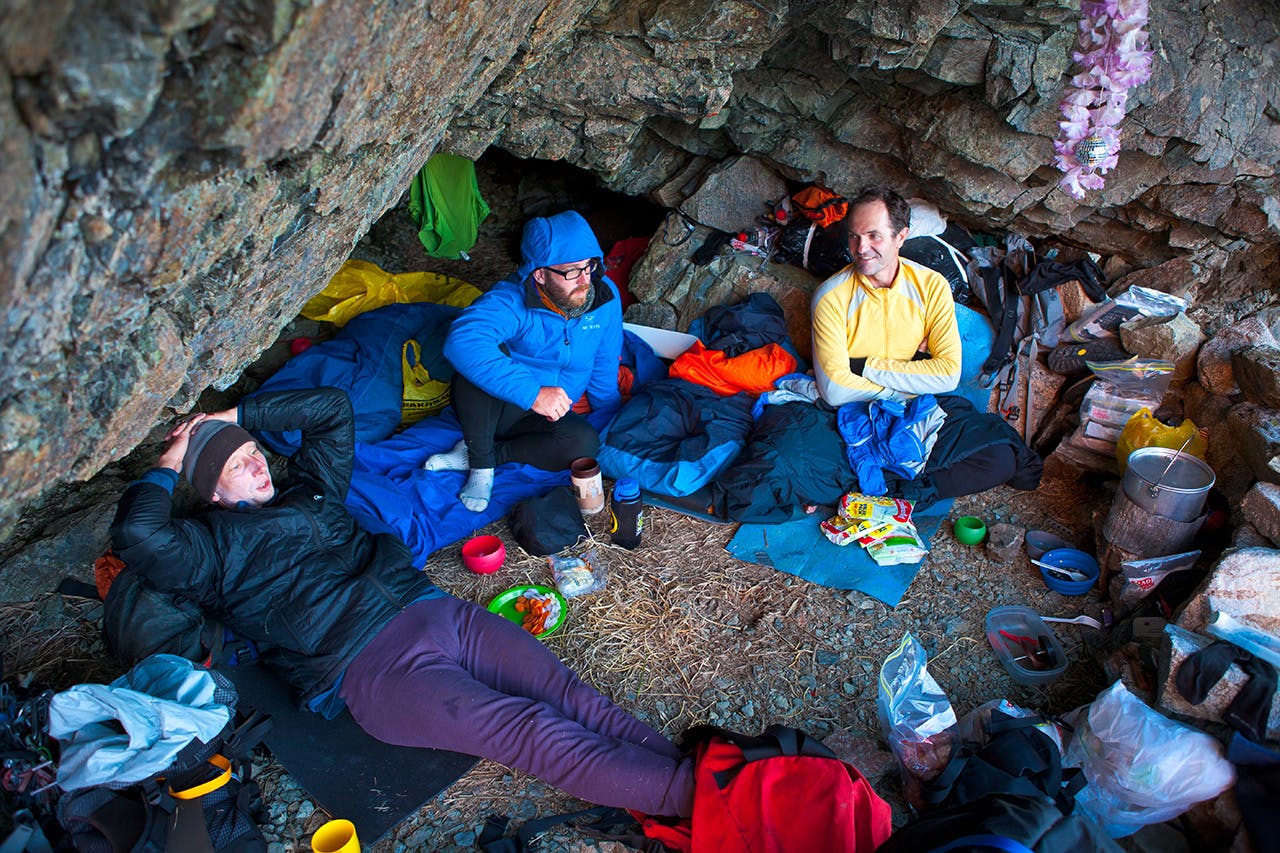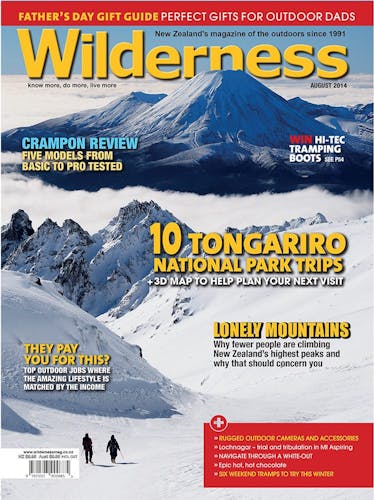Mountain climbing in New Zealand is in decline. Some blame climate change, others the perception of danger and the multitude of other activities vying for people’s time. But even though fewer Kiwis are taking up alpinism, there are plenty out there rocking the mountaineering world
Think of mountaineering in the 1970s and 80s and images of large sunglasses and rugged beards come to mind, often accompanied by bandannas, plaid shirts, beige leggings and sunburnt faces. Dungarees and matching overalls weren’t out of the question either.
These images tend to become romanticised over time and many of today’s mountaineers will refer to them as ‘the glory days’. Days when groups of students and friends would spend a week exploring alpine passes and peaks. Days when competition to find and complete new ‘firsts’ was rife.
There aren’t many counters measuring the popularity of the really remote stuff, but anecdotally many alpinists believe there’s been a significant decline. They sense people are more inclined to avoid the glaciers, snow fields and knife edge ridges that were, at one time, so appealing to so many Kiwis with a sense of adventure.
So, are we a softer bunch now? Is a latte in Westfield more appealing than a mug of soup at Tasman Saddle?
Not so, according to Whitney Thurlow, who has been guiding for Aspiring Guides for 20 years. He says it’s the mountains themselves that have changed, rather than our desire to explore.
“Access to glaciers is getting more and more difficult all the time,” he says. “The big thing is the moraine – on lower glaciers you end up with impassable over-steepened towering walls of loose rock. You can’t really deal with them and access is cut off to places you used to get to.
“People used to walk into places where now the only option is to fly. With the Copland Pass, for instance, Kiwis used to go over that all the time. But it’s getting harder every year and now you can’t do it easily. You have to negotiate dangerous moraine and hardly anyone does it anymore.”
Thurlow cites the example of Tasman Glacier, where there used to be two huts half-way up, but one’s been destroyed and the other’s now unreachable. “In a lot of places, flying becomes more of a necessity.”
On top of this, Thurlow says the increase in choice of different activities will inevitably lead to fewer people in the high mountains.
“There are a lot more options of things to do now. For instance, there were no bolted climbing routes 30 years ago. Climbing gyms didn’t exist, people didn’t tend to go kite surfing, wind surfing, mountain biking or kayaking.”
However, some believe cultural factors play a far greater part in the apparent decline. Andrew Hobman, from the Mountain Safety Council, believes one of the reasons is the increased perception of danger. “The fear factor is a large part of it,” he says. “These days people do things with a high perceived risk, but where the risk is actually very low, such as bungee jumping.”

Pursuits like mixed rock and ice climbing are gaining popularity at the expense of more time-consuming and committing alpine climbing. Photo: Mark Watson
He says the media feeds off the perception that mountaineering is dangerous – witness the tragic death of Hiroki Ogawa and Nicole Sutton on Mt Egmont/Taranaki in 2013 which was played out over several days in the media.
“You always see horror stories making the headlines and it would be nice if people didn’t perceive it as a deadly sport,” says Hobman. “Even the summit of Ruapehu has a football pitch-sized plateau. It’s incredible up there and very manageable for people with reasonable fitness.”
Tony Wells is the acting general manager for Sarinz; the training centre for Search and Rescue. He says there has been a noticeable change in where rescues take place. “There are more SAR jobs occurring in the front country in recent years and from my experience there’s now more use of front country and less of backcountry.”
In a report regarding future trends in the backcountry, experienced SAR specialists gave their own opinions on how backcountry behaviour may change. Issues included lack of time and cost of travel forcing people to recreate closer to home and to head out when they can, regardless of the weather. Also highlighted was the issue of people becoming less prepared for outdoor activities, and an active ageing population resulting in more front country pursuits.
So if there are fewer people enjoying the really tough stuff, does this necessarily constitute a problem? Wells thinks so. He believes less exposure to the outdoors means the average Kiwi has fewer backcountry skills these days and this affects not just those needing the rescue, but those performing it. “In 2006 I was in Canada where SAR volunteers needed 12 to 24 months to be taught the basic backcountry skills before beginning SAR training.” This is not the case for SAR personnel in New Zealand, but Wells fears we may go the same way.
The issue of mountaineering popularity is something the climbing fraternity has discussed at great length. Membership of the New Zealand Alpine Club (NZAC) has been increasing, which would suggest it’s as popular as ever. But the club has realised the term ‘climbing’ means many more things these days with the increased range of activities.
NZAC instigated its first Great Debate in 2009, entitled ‘The future of NZ Climbing: Alpinism is dead, bouldering is flourishing – what next? And what are we going to do about it anyway?’.
“The increase in membership is not necessarily indicative of recreational mountaineer numbers,” says NZAC’s general manager Sam Newton. “Our members include rock climbers, ski-tourers and armchair climbers alike.
“Getting an accurate idea of numbers is pretty tricky. Hut books are not the best indicator – plenty of people don’t use huts. This is something the whole outdoor recreation community struggles with. It’s pretty hard to convey our interests to the decision makers in Wellington when we only have a rough idea of how many people are involved.
“My sense is that people are engaging with the mountains in different ways. We are absolutely certain that ski-touring is growing hugely. Mixed and ice climbing are increasing in popularity. Certain areas, such as the Darran Mountains, are getting more traffic than ever.”
Newton agrees with Thurlow that people are taking advantage of the higher range of activities available now, and that the changing climate has altered behaviour too.
“Conditions we used to associate with late summer are now occurring earlier,” he says. “More ascents of Aoraki/Mt Cook, for example, are happening in November and December. It used to be January. Glacial recession has definitely had an impact, no doubt about that.
“We also need to acknowledge that people spread themselves pretty thinly these days and like to experience a variety of pursuits. Someone is not just a mountaineer. They probably also dabble in a variety of sports, such as rock climbing, skiing, mountain biking and kayaking.”
Alpine climber Paul Hersey agrees that the range of pursuits has increased but doesn’t think this has reduced the number of climbers in the mountains. He says many of the same people who partake in the likes of rock climbing, mountain biking and wake boarding will also take to the mountains.

Climbers rest at their rock bivvy after a day climbing in the Darran Mountains – the new centre of NZ climbing. Photo: Mark Watson
“I used to think there are fewer mountaineers,” says Hersey, “but now I’m not sure. People are doing a spectrum of things.
“The number of climbers in the Darrans is growing hugely. It’s now the home of technical mountaineering in New Zealand. It has beautiful technical climbing and when I was there recently there were heaps of people. I saw a bivvy site where there must have been four or five parties there – it was good to see.”
New Zealanders are also heading overseas to challenge themselves on unclimbed routes in remote mountain ranges. Hersey has just returned from an expedition to the Himalaya, where he had hoped, with his wife Shelley and Australian teammate John Price, to be the first to climb Anidesha Chuli (6815m). It didn’t work out for them, but Graham Zimmerman, who honed his skills in the Southern Alps and has now moved to America, received international recognition for a first ascent in 2013 of remote mountain in Alaska. And just recently Kiwi Kieran Parsons was supported by the Canterbury Mountaineering Club and British Mountaineering Club in making three first ascents in the Fairweather Range of Alaska’s Glacier Bay National Park.
Dr Erik Monasterio is a forensic psychiatrist and keen climber who has spent many years examining why climbers and adrenalin junkies continue their endeavours despite the risk.
He says that no matter how risk-averse society becomes and how much the media sensationalises mountain deaths, there will always be those who take risks to push the boundaries, but that these days there’s less scope for this in the mountaineering world.
“The 60s, 70s and early 80s were a golden age in many ways. Mountaineers would challenge each other by climbing new routes and peaks but all the obvious and achievable ones have been bagged already,” Monasterio says.
“The top climbers just want new routes. And 30 or 40 years ago you could climb new routes without the expertise required today. Now you have to acquire new routes away from the big hills.”
One group keen to ensure the art of mountaineering is never forgotten is the New Zealand Alpine Team (NZAT). This is a group of experienced climbers who, over three years, teach a group of around eight promising young climbers the range of skills they’ll need to be top alpinists. The young climbers will head with their mentors to the likes of Patagonia, Yosemite and Alaska and will learn as much in the three years as the older climbers would have learnt in 10. After the three year course is complete, the team will look for another eight young enthusiasts.
One of the founding members, Ben Dare, says the group, which formed 18 months ago, wants to emulate what’s happened in Europe. “They’ve had this going for some years with noticeable success,” he says. “In France, for instance, they have 100 applicants each time and hold trials for who gets on the team. We hope it develops like that over here in the coming years.
“The programme is completely free – the young guys and girls don’t pay for anything – but we expect them to already be climbing and be familiar with the alpine environment before they start.
“It ensures knowledge is passed on to the next generation and increases the depth of high level climbing in this country.”
The team is supported by numerous sponsors, which suggests there’s still very much a belief in alpinism as a sport. And Dare says although the number of mountaineers may have decreased, the skill level hasn’t and today’s young climbers are on a par with those from previous generations.
As long as schemes such as NZAT continue to inspire quality alpinism, the New Zealand mountaineer – with all the accompanying skills, endurance and sense of adventure – will never become a thing of the past.








